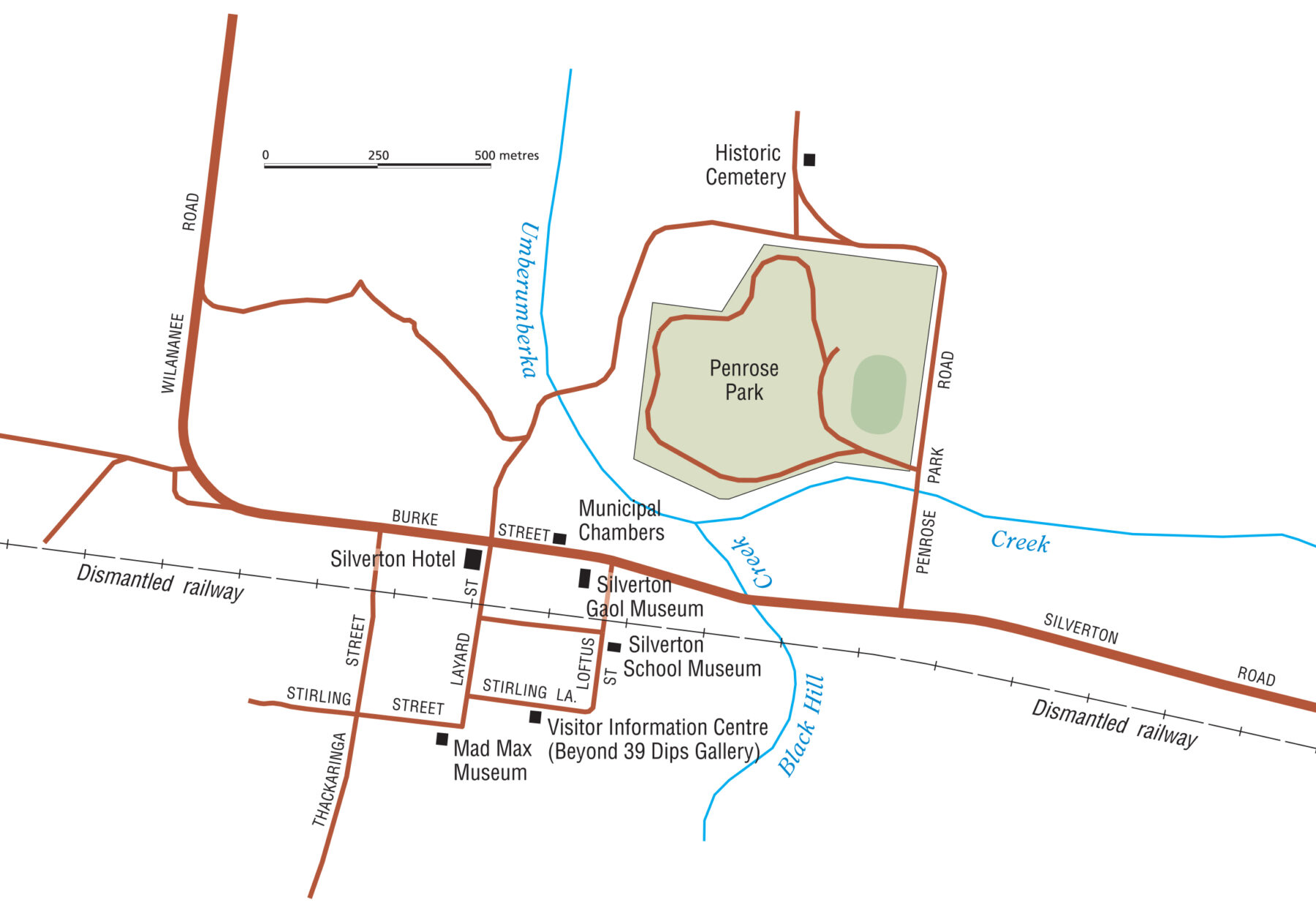A complete guide to Silverton, NSW

If it wasn’t for the small community of artists, its desirability as an outback setting for movies and the seemingly never-ending tourist trade, Silverton would be little more than a ghost town on the desert’s edge.
Located west of Broken Hill and close to the South Australian border, this once thriving mining town had a population of 3000 during its heydey in the late 1800s. Now it’s little more than a few historic buildings, the remnants of vibrant streets, several art galleries and a pub. There are a few musts for a visit here.
After a drink at the Silverton Hotel, travel a couple kilometres to the Mundi Mundi Lookout and gaze to the horizon over barren desert. Then take in a tour at the Day Dream Mine, the last mine in the area that is still open for inspection.

Location
Silverton is located near the South Australian border, 1167km west of Sydney via the Great Western, Mitchell and Barrier highways; 26km west of Broken Hill; and 536km north-east of Adelaide via the Barrier Highway.
Origin of Name
In 1883 the tiny mining settlement of Umberumberka moved 2km to the south-east. The locals decided to give it a different name and so the new silver mining town became Silverton.
Vistor Information
Silverton Visitor Information Centre,
19 Stirling Lane, open daily 8am–4pm.
Call 08 8088 7566
Useful Websites
Image credit: shutterstock
Places of Interest

1. Silverton Public School and Museum

The Silverton Public School, which started life as a tent in 1884, evolved into a tin shack in 1887, and finally became this simple building in 1889. The school served the local community until it was finally closed in 1970. Its most famous teacher was Mary Jane Cameron, who worked there as an assistant teacher from 1887 to 1889, and became the renowned Australian poet Dame Mary Gilmore. It is now a museum and, through photographs and artefacts, tells the story of the district and of education in outback Australia.
2. Silverton Hotel
As well as being a watering hole for film crews, the pub (pictured opposite) has itself become a popular film location, featuring in a truly diverse range of films including Wake in Fright, Mad Max 2, A Town Like Alice, Hostage, Razorback, Journey into Darkness, Dirty Deeds, The Craic and Golden Soak. The original pub opened in 1884, burnt down in 1918 and was replaced by the current building, which previously housed the town’s postal service. It’s a pub with character and the building has a wry sense of humour typical of outback Australia.
3. Mad Max Museum

The museum celebrates the apocalyptic movie Mad Max 2, which was filmed around Silverton. The museum has some of the vehicles used in the movie, extensive collections of local Mad Max-related memorabilia and life-sized models in full costume.
4. Silverton Gaol Museum

Silverton’s original gaol was a timber and iron building. By 1888 it was regarded as totally inadequate and unfit even for prisoners. The present building was erected in 1889. It became an overnight lock-up in 1892, a boys’ reformatory in the 1930s and was closed in 1943. It was restored by the local historical society and reopened as a museum in 1968.
5. Mundi Mundi Scenic Lookout

There is nothing quite like standing on a hill and gazing to the horizon over barren desert. It is a reminder of how vast and isolated so much of central Australia is. If you drive north from Silverton for about 5km you will see a sign saying “Mundi Mundi Lookout 400m on right” and from this vantage point you can look down and across the Mundi Mundi Plains. The setting was made internationally famous when it appeared in Mad Max 2.
6. Day Dream Mine
The only mine in the area where visitors can have a genuine mining experience is at the old Day Dream Mine site. Drive east out of Silverton and turn left along a dirt road to the old mine. It’s about 18km from Silverton to the mine. The Day Dream Mine opened in 1883 and continued until 1983. The area still has the detritus of its mining heyday with equipment littering the site. There are regular guided tours.

History
Before Europeans arrived, the Wiljali people moved through the area.
In 1844 Charles Sturt sighted the Barrier Range during an expedition from Adelaide.
Prospectors arrived in 1867 after a local station hand claimed, mistakenly, to have discovered gold.
In 1880 rich deposits of silver were discovered and 300 miners flooded into the district.
In 1881 John Stokie establishedthe Umberumberka claim. A settle-ment with that name grew up 2kmnorth-east of present day Silverton.
Silverton was surveyed in 1883.
In 1884 1222 mineral leases, 937 business permits and 114 miners’ rights were issued. In that year 6000 tonnes of ore were extracted.
By 1885–86 the town’s population reached 3000. Silverton was proclaimed a township in 1885 and a municipality the following year.
In 1888 the Silverton Tramway Company was set up. It built a railway line to the SA border (pictured, right).
In 1892 Umberumberka mine closed.
By 1901 the town was in decline, houses were moved and only 286 people remained. Today it has a permanent population of about 50 people (2016 Census).
Image credit: State Library of South Australia





